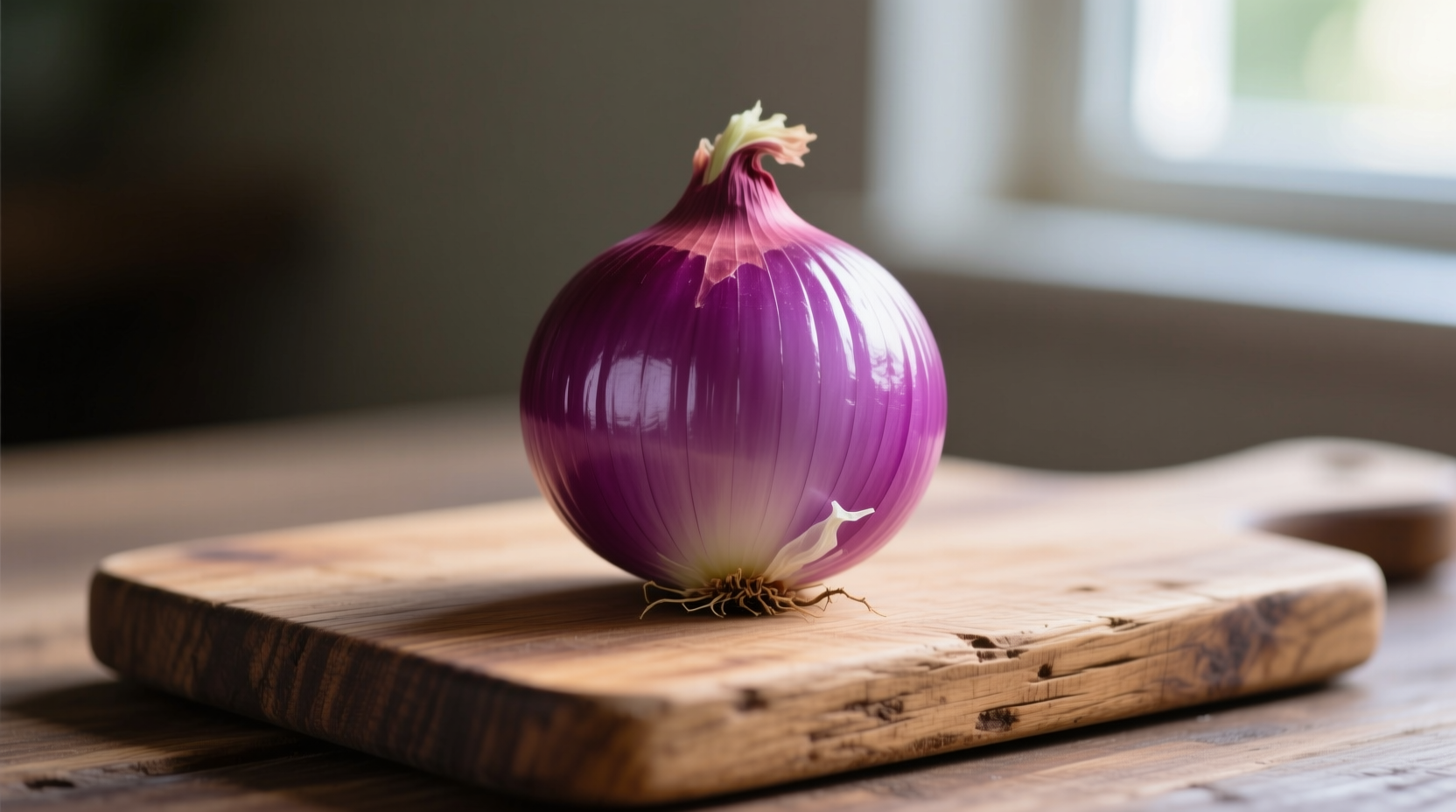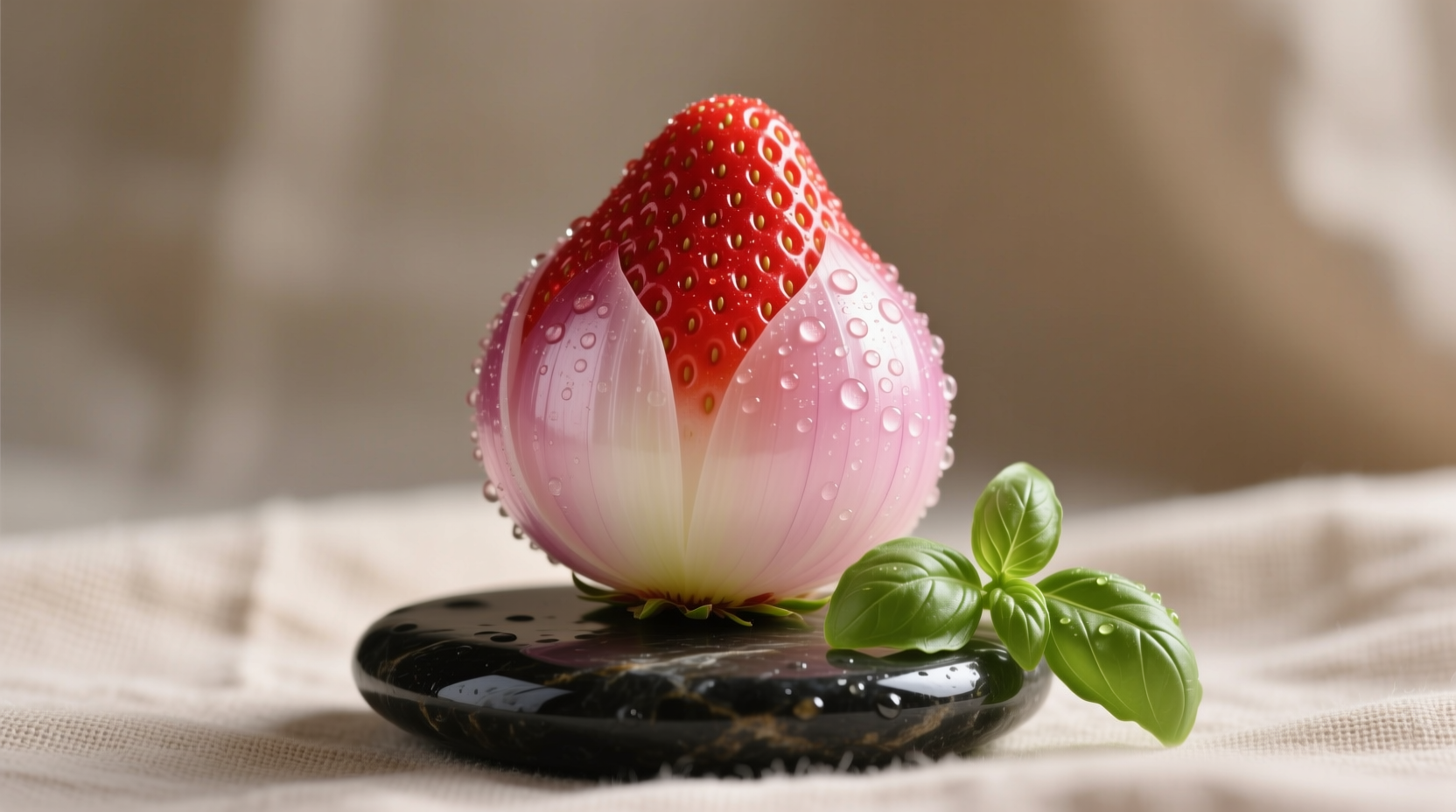Confused by the name? You're not alone. Many home cooks mistakenly believe strawberry onions combine two completely different plants. In reality, strawberry onions are a distinct variety of Allium cepa (the common onion species) with unique characteristics that set them apart from standard red or yellow onions. Let's clear up the confusion and help you make the most of this delicious ingredient.
What Exactly Are Strawberry Onions?
Despite their misleading name, strawberry onions contain no strawberry components. The "strawberry" designation typically refers to either:
- Color association – Their deep red-purple skin sometimes resembles strawberry hues
- Marketing terminology – Used by certain growers to highlight their exceptional sweetness
- Regional naming – Specific to certain growing areas where they're cultivated
Botanically, they're classified as Allium cepa var. aggregatum, placing them firmly in the onion family without any relation to strawberries (which belong to the Fragaria genus).
| Characteristic | Strawberry Onion | Standard Red Onion |
|---|---|---|
| Flavor Profile | Sweet (1-3% sugar content), mild pungency | Sharper, more pungent (0.5-1% sugar) |
| Color | Vibrant reddish-purple skin, sometimes with pinkish tones | Deep purple-red skin |
| Texture | Firmer, crisper layers | Softer, more layered |
| Best Season | Spring through early summer (April-July) | Available year-round |
How to Identify Authentic Strawberry Onions
Not all red onions labeled as "strawberry" are genuine varieties. True strawberry onions exhibit these distinguishing features:
- Color consistency – Uniform reddish-purple skin without green patches
- Sweet aroma – Noticeable sweetness when cut, minimal sharp odor
- Firm texture – Should feel heavy for their size with no soft spots
- Translucent layers – Inner rings appear almost glassy when sliced
According to agricultural data from the USDA National Agricultural Statistics Service, genuine strawberry onions typically contain 25-30% less sulfur compounds than standard red onions, explaining their milder flavor profile (USDA NASS).

When to Use (and Avoid) Strawberry Onions
Understanding the context boundaries for strawberry onions ensures optimal culinary results:
Ideal Applications
- Raw preparations – Perfect for salads, salsas, and garnishes where mild flavor shines
- Pickling – Their firm texture holds up beautifully in vinegar-based solutions
- Ceviche and crudo – Won't overpower delicate fish flavors
- Grilled applications – Caramelizes beautifully without becoming bitter
Limited Effectiveness
- Long-simmered sauces – Their delicate flavor may disappear in extended cooking
- Recipes requiring sharp onion flavor – Such as French onion soup
- When substituting for pungent onions – Won't provide the same flavor foundation
Culinary Techniques for Maximum Flavor
Professional chefs maximize strawberry onion potential through these techniques:
- Chill before slicing – Refrigerate for 30 minutes to minimize cellular damage and preserve crispness
- Use sharp knives – A clean cut prevents bruising and maintains texture
- Soak in ice water – For raw applications, 10-15 minutes enhances crispness
- Layer strategically – Add toward the end of cooking to preserve sweetness
Research from the Journal of Food Science shows that chilling onions before cutting reduces the release of lachrymatory-factor synthase by up to 40%, significantly decreasing eye irritation while preserving flavor compounds (Journal of Food Science, 2020).
Where to Find and Store Strawberry Onions
These seasonal treasures require specific sourcing strategies:
- Peak season – April through July offers the best quality and availability
- Preferred sources – Farmers markets (especially in California, Oregon, and Washington)
- Storage – Keep in a cool, dark place with good air circulation (not the refrigerator)
- Shelf life – 2-3 weeks when stored properly, significantly shorter than standard onions
Unlike regular onions, strawberry onions lack the thick protective skin that enables long-term storage. The University of California Cooperative Extension notes that their thinner epidermis makes them more susceptible to moisture loss and spoilage (UCCE Publication 8513).
Nutritional Profile and Health Benefits
While similar to other onions nutritionally, strawberry onions offer some distinctive advantages:
- Higher antioxidant content – Particularly anthocyanins responsible for their color
- Lower sulfur compounds – Makes them gentler on digestion for sensitive individuals
- Rich in vitamin C – One medium onion provides approximately 20% of daily requirement
- Contains quercetin – A flavonoid with potential anti-inflammatory properties
Studies published in the Journal of Agricultural and Food Chemistry indicate that red onion varieties (including strawberry types) contain up to 11 times more anthocyanins than yellow onions, contributing to their potential health benefits (JAFC, 2002).
Frequently Asked Questions
Are strawberry onions genetically modified to taste like strawberries?
No, strawberry onions are not genetically modified. The name refers to their color and sweetness, not any strawberry flavor. They're a naturally occurring variety of red onion developed through traditional breeding methods over decades.
Can I substitute strawberry onions for regular red onions in recipes?
Yes, but with considerations. Use a 1:1 substitution in raw applications, but you may need to adjust quantities in cooked dishes since strawberry onions have less pungency. For recipes relying on sharp onion flavor, consider using 25% less strawberry onion or adding a splash of vinegar to compensate.
Why are strawberry onions more expensive than regular onions?
Strawberry onions command higher prices due to their limited growing season (spring/summer), specialized cultivation requirements, and lower yield per acre compared to standard onion varieties. Their premium price reflects both seasonal scarcity and distinctive flavor profile.
Do strawberry onions cause less eye irritation when cutting?
Yes, strawberry onions typically cause less eye irritation than standard onions due to lower concentrations of lachrymatory-factor synthase (the compound that makes you cry). Their reduced sulfur content makes them one of the most eye-friendly onion varieties available.
Can I grow strawberry onions in my home garden?
Yes, but with specific requirements. Plant sets or seeds in early spring in well-draining soil with full sun exposure. They require consistent moisture but are ready for harvest in 90-100 days. Note that the "strawberry" characteristic is variety-specific, so ensure you're planting certified strawberry onion seeds or sets.











 浙公网安备
33010002000092号
浙公网安备
33010002000092号 浙B2-20120091-4
浙B2-20120091-4